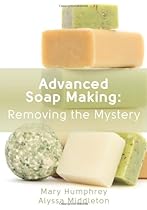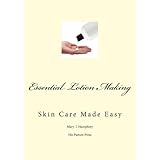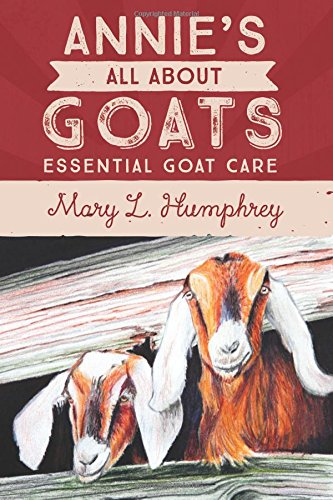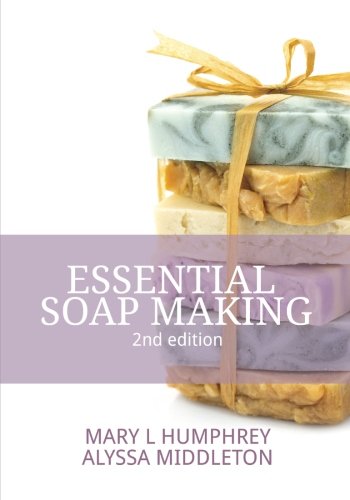Soap making revolves around three basic methods: melt and pour, hot process and cold process.
The melt and pour process involves a pre-made base that the crafter melts and then pours into a mold.
Both hot process and cold process follow the same recipes. The hot process involves heating the raw materials until they form soap (see the photo above).
The benefit to hot processed soap is that it is mild as soon as the heat process is completed. A cold processed bar of soap is not mild (cured) for several days, to several weeks. A cold processed bar of soap must sit on a curing rack, awaiting mildness and hardness, for 4-6 weeks. A hot processed bar of soap is already mild, therefore, it only needs to harden for a few days to 1 week.
I am a girl that loves to wing-it. I really am impatient with reading someone else’s instructions. I dive into whatever I am doing with prayers that it works out, and sometimes that means I learn the hard way. The good news is the hot process batch of soap was very successful. I was hoping the mottled look would leave as I pushed the thick soap into the mold.
Alas…the mottling stayed in the soap.
Now, for the rest of the story!
I am trying to stay on top of sales during the holiday season. As I completed an inventory count of honey oatmeal goat milk soap I realized I might run out before the holiday season ends. So, I decided it was time to dive into the hot process. What better soap to start with than honey oatmeal!
It smells wonderful. It is mild. It is pretty. But it certainly does not pass for the creamy look of the honey oatmeal goat milk soap that I normally carry. I used a small piece of the soap already, by the way, it is excellent soap!
What do you think of the hot processed honey oatmeal soap?








Hi Mary – I think that soap is kind of interesting-looking. You can tell where the oatmeal and honey is. You know it’s pure because of that. No fake stuff. I’ll have to compare it to the cold process honey/oatmeal soap you have and see what I think.
You know, (this great analogy just came to me) people are like that, too. Sometimes they aren’t beautiful or young or fit into the category of what we think beauty/youth ought to look like, but inside they may be the most wonderful, loving person. The older I get, the less I care about the outside looks, and just look into the heart.
I bet it’s a wonderful soap!
Perfect analogy, Vickie. In some cases not so pretty is more beautiful.
When I first starting making soap I thought the bars had to be perfect with clean and sharp edges, nothing out of place…but then…I realized this soap represents a simple life, soap fresh from the farm…not the type of soap to be found on a Macy’s shelf. A soap to be found in a shop with a creaky wood floor, with homey scents floating through the air, and one-on-one service. Yes, that is beautiful rustic soap…where ugly is pretty!
Looks like you are whipping up a batch of oatmeal cookies! I have never made hot processed soap…does it cure faster? Does it have a different feel and scent?
Kathy, the soap cures as soon as it is cooked. It takes a few days, to a week, to harden.
The scent is great. I always appreciate the nutty/oatmeal type of natural scent with my honey oatmeal soaps. With the hot processed soap, the scent is more prominent.
My honey oatmeal does not contain scent, however, hot processed soap additives such as color and scent are added after the cooking process, so the color and scent is retained to a higher degree.
As far as the feel is concerned, the test that I made indicates the soap is creamy and skin loving, very close match to the hot processed soaps that I normally make.
Thank you…great questions!!!
Mary, I know what you mean about expecting perfect soap when you first start out! I did too – but soon realized that the slight imperfections and slight differences from batch to batch means more to people. It marks it out as handmade.
I have to say I prefer the look of the CP oatmeal soap, but that’s just me!
It looked like the HP product was very hard to work with and get into the mold – is that true?
Ann, I purchased handmade soap for many years, for myself. It did not matter to me if the soaps were cut unevenly, or if the color varied slightly. It was handmade, and I knew it.
I am a strong women, I lift heavy bales of hay on a daily basis, but let me tell you, pushing the hot processed soap into the mold was not an easy task.
I did use the hot processed honey oatmeal soap today. It is nice soap, despite the mottled look. Very luxurious feeling soap. I like it in that respect.
But…all the same, I do prefer the CP method.
Yes, it looks like it would have been hard to handle! It is a huge advantage being ready to use so quickly, though.
I think it looks neat. But I am one to always be attracted to the different things.
Yep, unique is a good thing!!!! Ya gotta walk a little sideways every once in a while! 🙂
Becky, It is sort of neat. Ha. Neat is good.
Walking sideways…that is better than getting out of the box. 🙂
Yeah, sometimes, with our old bones… it’s much easier than climbing out of the box. Sometimes, my boxes have some pretty hefty sides on them. 🙂
Thicker sides…Thanksgiving helped in that respect. Ha.
Hi Mary,
Your soap does look beautiful! I agree about the liking the way a CP soaps looks creamy and smooth. I too did a CPHP soap and it looks just like yours (except I didn’t add any additives) so I feel good knowing that I did it correct! LOL I am not sure if I am going to do it again, maybe in a pinch, but it just means I have to be extra prepared for the holidays next time around so I don’t have to worry.
Great job for a first time go around!!
Melissa
Yep, I didn’t get the creamy look with this one. Looking forward to receiving your HPCP soap, Melissa. It will be good to compare…but it appears we both were successful with turning out what was needed.
I am glad you enjoyed the process. I always do the hot process and tried cold process once and it was a failure. I would like to try it again though. As for the mottled look to your soap that is because of too hot cooking and over cooking. Turn down the crock pot (or pot, etc). I like to push mine into the mold and then use the scrapings from the pot to form balls or sometimes I just save some to form balls. If you knead the soap (while it is still hot so be careful and do the knead, stop and cool your hands, knead, repeat etc) then the soap takes on a more opaque like look and the color changes. Nice to have the soap balls though!
Milk, in my estimation, is more difficult to work with when following the hot process method. Milk scortches so easily. Best wishes with you cold processed method!
I have no problem with the milk scorching. If you want, I will send my recipe.. It actually comes from a book. I forget the authors name. I will search for it…Boone I think..lives in Washington (state). Hint: Measure the water for the lye solution. Then take a tiny bit of water out of the amount you measured for the lye and another tiny bit into a second little container. Add the Goats milk powder to the one and the honey to the second and put both in the freezer. Then, continue making the lye solution by adding the lye into the larger bowl of water and stirring, set aside, melt your oils, add the lye solution, stick blend to trace, cook till done, add your fragrance, add the oats, add the two containers of honey and goats milk, (stir between each adding of ingredients). Of course, the milk and honey will be icy/frozen–it will melt just fine. Pour into molds, Voila! no scorch and it is wonderful. Do you use a crock pot? I do. Cheap one from a garage sale. and I always grab stick blenders for cheap prices at garage sales too–since they can burn out –also, can use two for one batch so they get a rest and don’t burn out!
Also, can go here for info on hot process. http://groups.yahoo.com/group/hotSoap/
I have used a crock pot for hot processed soap. I do not use any water in my soap, only straight goat milk. I would love the recipe that you were talking about. With the amount of wholesale and retail orders that I have been receiving, I could use a faster method with wonderful results. My method is slow, but to keep the milk from discoloring. I use Kitchen Aid stick blenders. They do an excellent job. I agree with you! Thanks so very much!
Hi there,
I really like the look of your hot process soap. It is pretty and homemade and that is what people are looking for and really appreciate. I would love to get your recipe please. Thank you.
Thank you, Sylvie. It looks like Cally supplied us with a good recipe for hot processed soap with goat’s milk powder. I appreciate that.
I do not use milk powder, nor water, in my soap, so hot process has not been a good option for me due to the scalding issue.
If you need anything, please give me a holler. I cannot give you my own tried and true recipe, but I do not mind helping out otherwise.
Best wishes with your soaping!
Sylvie: I do not know if your request was masde to Mary or to me, but in any case, I will share my recipe as Mary (also) asked for it.
4 oz (114 g) cocoa Butter
14 oz (398 g) coconut oil
8 oz (227 g) canola oil
2 oz (57 g ) castor oil
8 oz (227 g) safflower oil
24 oz (682 g) olive oil
2.75 ounces (78 g) distilled water in one small bowl
2.75 ounces (78 g) distilled water in 2nd small bowl
16.5 oz (569 g) distilled water (for lye solution)
8.2 ounces (233 g) Lye
2.5 ounces (71 g) fragrance (I use Oatmeal, Milk and Honey from Brambleberry)…use the amount that siuts you.
.5 oz (14 g) honey
2 Tablespoons Goat Milk Powder
2 ounces coarsely ground oats
Combine lye and largest bowl of water (8.2 oz) Set Aside.
Add hard oils to crock pot. when melted, add liquid oils to crock pot. I start the crock pot on high to melt (can also melt in microwave) and lower just before adding the lye solution. Add honey to the one small bowl and the goats milk powder to the 2nd small bowl. Whish/mix thouroughly (I heat the honey a bit to make it dissolve better) then put both little bowls in your freezer.
Once oils are all melted, add the lye solution and stick blend to trace. Put the lid on and cook according to hot process method. When done, add the fragrance, stir, add oats, stir, add honey and goatsd milk solutions, stir. Pour into mold (wooden or PVC pipe–prepared with oil. This soap does not lend itself to molds with embossed designs–at least I have not been successful yet.
The nice thing, is it is soap right after it is done. I prefer to cure mine at least a couple weeks to get it harder (evaporat more moisture) After 2 months it is really good! But it is not necessary.
Maybe some one can enlighten me on whether CP soap goes well into embossed molds. (Such as say Goat’s Milk Soap or pretty rosettes etc).
Happy Soaping!
This looks like a good recipe, Cally. I appreciate you sharing it.
I would imagine the soap does get better with age, I find that to be true with handcrafted soap, especially goat milk soap.
I need to find a good recipe, that I can convert from my own (that I cannot share here, for obvious reason), to test with fresh goat milk, no water added.
When my holiday season slows down (I am very much in full swing) I may give it a shot.
I do not have an answer for you regarding the embossed molds. I am a sticker for the wooden molds, cutting soap the old fashioned way – for my own soaps. Let me know what you find out about the molds, if you don’t mind.
Thanks for stopping by my blog. I am a soap-making newbie and am experimenting with different methods. The recipe I have been using is from the Homestead Blessings Soap Making DVD featuring the West Ladies. I substitute frozen goat milk for the water and initially exchanged the shortening for lard. Yesterday I switched to shortening and also melted all the oils before putting them in the crock pot. Once I add the honey after trace, things went very dark…..and now my soap looks like delicious brownies. Not a bad thing, but they don’t smell real good! The soap did clean up well with a nice lather from the crock and blender.
I have also used various shaped molds with the cold processed goat milk soap and yesterday’s crock pot soap. All turned out nicely.
Anita, when we first started making soap it was an adventure that included a lot of trials with failed results. Your soaps are very pretty. Perhaps after a few days they will smell better too. If not, I bet you will discover how to fix them so they smell better next time. Best wishes!
I add the honey AFTER the soap is saponified–after it is done “cooking” and my soap turns out a light tan. I just fold it in like you would whipped egg whites into a cake recipe.
Mary you can thin the soap alittle with isopropyl alcohol before putting it in your mold. Usually a few oz. do the trick and make a smoother finish
Thank you for the tip!
I have found that if the goat milk is frozen really slushy and you just add a little at a time you can use all milk. Or sometime I use equal water and lye to dissolve, then the rest of the liq in goat milk after the lye solution has cooled to nearly room temp. Hope this helps
Diluting the goat milk, and adding the milk when it is in a nearly frozen state definitely would help when making hot processed soap.
I’ve not included hot processed soap making in my soon to be released second book, Advanced Soap Making; Removing the Mystery, however I have included detailed instructions for including goat milk.
Thank you for your comments!
Calmly could you use sunflower oil in place of the safflower oil in your recipe?
Both sunflower and safflower oil can be used as partial substitutes for olive oil in a recipe. They appear to result in the same properties in soap (lather and softness). I would run formulas through a soap calculator, one with safflower – one with sunflower (same percentage), and compare the results.
Thank you for the question. Mary
Also I would like to make a hp soap that is a little more smooth, am I stirring it too much and cooling the soap or what? Has any one been able to get a smooth hp soap? I know it looks diff than the cp but I don’t want it to look like a seized batch! Lol
I haven’t given HP a try in a number of years. I never could obtain the smooth look!
Definitely must freeze the honey /water mix and the goats milk before adding to the saponified soap in the hot-process method. Also, some say use equal amounts of lye and water .. mix them to dissolve lye, then when lye water is cool or 90 degrees or so, then add in the goats milk then add it to your hot oils in the crock pot and then stick blend to trace, then cook till saponified, then add fragrance So color needed as it will have a beautiful light brown color after adding fragrance if you the fragrance I use which has a vanilla in it–it reacts and turns soap a light brown. Anyway, as for “smooth” sap–since I have not yet made cold process soap.. this is the only soap I know to make –no, not smooth, but I like the natural look anyway.
I have a friend that does the cold process method and she also puts beeswax in her bars. They are very hard and then she shaves a bevel onto them too. Wraps them in natural looking paper.
Thank you so much for your comments. I am sure it will help others with the HP process, especially when including GM.
I’ve heard that some add the milk at the end of the HP process, right before turning it into the mold. I would be concerned with spoilage. Have you tried that method?
Good Morning Mary….would you please tell me if oats and honey can be added to any cold process recipe without making adjustments to it?
Thank you,
Jean
Hi Jean –
I’ll start with cold processed – no, no adjustments need to be made to the recipe when adding oats and honey. I would add the honey late in the mixing process, at trace, to ensure there are no un-safe volcano effects (the mixture bubbles up dangerously) or to prevent seizing.
Hot processed – I am not as familiar with, but, no, there are no adjustments to be made to the formula. For 5 lbs of soap, I normally added 2 to 3 tablespoons of honey and 1/4 cup of finely ground oats.
Have fun soaping!
Mary
Thank you Mary, just one more question…
I know you said that you were not as familiar with hot process, but perhaps you do know when the honey and oats should be added, I am thinking, after the cook but I’m not sure.
Jean
Sorry I meant to say hot process
Jean
Recipe for hp goats milk soap?
No, I have no recipe on hand. I want to direct you to a site where you might find a recipe but I cannot locate it right now. I will post it here as soon as I do.